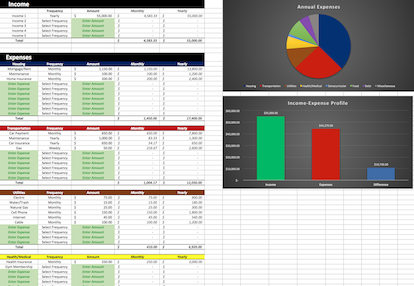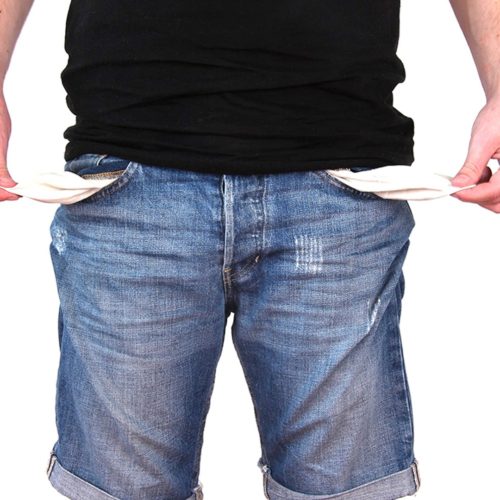
In a previous article, I mentioned that I view my investment portfolio as my own personal financial firm. Each share of stock I hold is one of my employees within this firm. Once I've hired them (i.e. bought a share) they never tire, will never quit, don't require a salary, and work 24 hours a day to grow my personal wealth. It all sounds like a great deal, and it is, but, believe it or not, in reality, it’s actually even better.
Imagine that as each of these employees worked tirelessly to grow the overall value of my firm, they also periodically deposited some money into my account, simply for the pleasure of being able to work for me. I'm talking cold hard cash to do with as I please.
It may sound too good to be true, but this analogy is a relatively accurate representation of how dividends work.
What Are Dividends?
A dividend is a portion of a company’s earnings that is distributed to its shareholders. The more shares you hold, the larger the portion you are entitled to. The amount and schedule of the distribution is determined by the company’s board of directors (a group who is elected by the shareholders). While no company is required to pay a dividend, many older, well-established companies do so, in order to return value to their shareholders. The primary stock investments that I recommend on this site (i.e. board market index funds and ETFs like VTSAX and VTI) typically pay a dividend (Note: The periodic disbursements you receive when you hold a bond are called interest payments. These payments are different from dividends).
In order to receive a dividend payment, all you have to do is purchase a stock or fund that pays one. Once you own the security (stock, fund, etc.), you’ll begin receiving periodic dividend payments (typically quarterly) which won’t stop until you’ve sold (assuming the board doesn’t vote to stop paying the dividend). When you receive your dividend payment, you can choose to have it deposited directly into your account as cash or you can direct your broker to automatically reinvest it by purchasing additional shares of the underlying company’s stock. I highly recommend the second option as it is an extremely powerful tool for compounding the growth of your portfolio. In fact, it’s estimated that 40% or more of the overall returns of the stock market may be due to reinvested dividends!
Going back to our analogy, reinvesting dividends would be equivalent to empowering your “employees” (i.e. shares of stock) to continually increase the size of your workforce by hiring additional employees (i.e. buying more stock) over time. Not only will these new employees work just as tirelessly as your existing employees to grow your wealth, they will also take it upon themselves to hire even more employees (i.e. reinvested dividends generate dividends, which are then reinvested, producing more dividends, which are reinvested…and on, and on, and on…). Once everything is set up, this automatic, compound growth happens without any additional effort whatsoever on your part.
How about a quick example?
Example
Tiffany just purchased 100 shares of the index fund XYZ for $10,000. She is enrolled in her broker’s Dividend Reinvestment Program (DRIP) so all dividends received will be automatically reinvested to purchases more shares of XYZ.
Assumptions
Index Fund Price = $100 per share
Dividend = $5 per share
Number Of Shares Owned = 100
Total Value Of Holdings = ($100 x 100 shares) = $10,000
All dividends are automatically reinvested.
After holding the shares for 1 full year, Tiffany is disappointed to find that the price of XYZ has not appreciated at all. The shares are still selling for $100 each. She looks at her account, expecting no growth, and is pleasantly surprised with what she finds.
Results After 1 Year
Fund Price = $100 per share
Total Capital Appreciation = $0
Total Dividends Reinvested = ($5 x 100 shares) = $500
Number Of Shares Owned = 105
Total Value Of Holdings = ($100 x 105 shares) = $10,500
Even though the stock price remained unchanged all year, the reinvested dividends allowed Tiffany to gain 5 additional shares of XYZ, increasing the overall value of her portfolio by $500!
What Happens When The Price Drops?
Dividends are independent of the movement of a stock’s price, so even if Tiffany’s holdings had increased or decreased in value, she would have still received the same $5 per share ($500 total). Since we know, over the long-term, the stock market always goes up, short-term stock market pullbacks are great opportunities for additional growth. Let me explain...
Imagine that the day after Tiffany purchased 100 shares of XYZ for $10,000, the price of the fund dropped to $50 per share. That’s a huge 50% drop in value, but what would it mean from a dividend perspective? If Tiffany once again, reinvested all of her dividends, by the end of the year she would have purchased 10 additional shares (i.e. $5 x 100 = $500, enough to purchase 10 shares at $50 per share).
The drop in price would have given her the opportunity to buy more shares of the same fund but at a steeply discounted price. Instead of ending the year with 105 shares, she would own 110 shares! Long-term, the price of the fund would recover and the value of her portfolio would be that much greater. This would all be accomplished with zero additional effort from Tiffany.
This is a prime example of why I never panic when the market drops. As a long-term investor, any short-term drops (even very steep ones) are just opportunities to hire more of the same great “employees” for my financial firm, at a cheaper price. When dividends are being reinvested, this whole process happens easily and automatically. I don’t know about you, but I’m a huge fan of getting more for less, especially when it requires little to no effort on my part.
Slight Adjustment (For The Better)
In an effort to keep the examples relatively simple I have ignored the fact that dividends are typically divided and distributed throughout the year (usually quarterly, as noted above). In reality, the growth of Tiffany’s portfolio would have been even larger than shown.
For example, the $5 per share dividend payment in the scenarios above would probably have been distributed in 4 quarterly payments of $1.25 per share. Each payment would have allowed Tiffany to purchase additional shares (including fractional shares) at that time. So after the first payment and subsequent automatic reinvestment, Tiffany would have owned 101.25 shares (i.e. $1.25 x 100 shares = $125, which would be reinvested to purchase 1.25 new shares).
For the second dividend payment, Tiffany would have received $126.56 (i.e. $1.25 x 101.25 shares). This amount would be automatically reinvested to purchase 1.2656 additional shares, increasing her total holdings to 102.5156 shares (i.e. 101.25 + 1.2656).
For the third dividend payment, Tiffany would have received $128.14 (i.e. $1.25 x 102.5156 shares). This amount would be automatically reinvested to purchase 1.2814 additional shares, increasing her total holdings to 103.797 shares (i.e. 102.5156 + 1.2814).
For the fourth and final dividend payment of the year, Tiffany would have received $129.75 (i.e. $1.25 x 103.797 shares). This amount would be automatically reinvested to purchase 1.2975 shares, increasing her total holdings to 105.0945 shares (i.e. 103.797 + 1.2975).
Assuming no change in price, the final value of Tiffany’s portfolio would be $10,509.45 (i.e. $100 x 105.0945 shares). While an additional 0.0945 shares is not a huge difference, don’t forget the power of compound growth. We are only analyzing a 1 year period. Over the long-term, the number of additional shares (and the dividends they produce) would continue to increase at an exponential rate.
What We've Learned (The Good)
Let’s summarize some of the things we’ve learned about dividends.
1. Dividends are a passive source of income that you receive just by owning shares of a company’s stock. They can be received directly as cash (or sometimes other forms of payment) or automatically reinvested.
2. The size of a dividend payment is independent of the price of the underlying stock so you are likely to receive the same amount even when the price of the stock drops.
3. Automatically reinvesting your dividends can turbocharge the long-term compound growth of your investment portfolio. This is especially true during short-term market pullbacks when every reinvested dollar goes a little further.
The Bad
By this point it may seem like dividends are the perfect investment. While they are indeed great, there are a few negative aspects as well.
1. Companies can change their dividend policy at any time. They are not obligated to pay any particular amount per share or to continue paying once they’ve started. In the past, some companies have reduced or eliminated their dividend payments during tough financial stretches, such as those experienced during severe market downturns. For example, many companies cut their dividend during the 2009 recession. (Note: Dividends can also be increased at any time. Many companies increase their dividend regularly)
2. Paying dividends tends to result in slower overall growth for a company. Instead of using the cash to grow the business, a company paying dividends sends that cash directly to its shareholders. This puts money in your pocket but also limits the ability of the company to grow its business. This can translate to a slower increase in the stock’s price.
3. Dividends are taxed. Though there are methods of avoiding taxes on qualified dividends once you’ve retired, while you’re still employed, owing taxes on the dividends you receive can sometimes be costly. Even with the lower tax rate you’ll pay on most dividends (0-20% on qualified dividends), owing additional taxes is never an exciting prospect.
Final Thoughts
Dividends can be a powerful tool in your pursuit of achieving financial freedom, so don’t hesitate to use them as a means of making your money work for you. Once you’ve got your money working for you, your future success is inevitable.
Tools To Get You Started
Get a head start on your journey toward achieving financial independence by analyzing and tracking your income, expenses, investment performance, and overall net worth with the free online wealth management tool Personal Capital.
We use Personal Capital regularly to analyze our investment fees, track our investments, and project our net worth. We also periodically review our progress toward retirement with their retirement planning calculator.
If you’d rather do things on your own, become a subscriber today and you’ll receive our Free Financial Planning Dashboard. This tool allows you to enter your income and expenses to create a detailed budget. You can use it to track your spending habits over time or just to get an idea of where your money is going each month. Take a look at the automatically generated charts and you may discover you have a little more cash to invest than you thought.
If you’re interested in detailed instructions on how to budget, save, pay off debt, and invest, check out The 6 Phases of Building Wealth. This book provides step-by-step instructions for working through each “Phase” in the process of achieving Financial Freedom. If you're just starting out, the information in this book will provide you with an invaluable resource. You can pick up the digital version for only $2.99 on Amazon.
Disclosure: Some of the links found on this website may be affiliate links. Affiliate links pay GGD a small commission when you click through and/or make a purchase. This is at zero additional cost to you.
Full Disclaimer/Disclosure
Related Posts
-
Why Saving Money In The Bank Will Leave You Broke (Part 1)
In 1923, Germany began printing and circulating two-trillion mark banknotes. That’s a “2”, followed by 12 zeros (i.e. 2,000,000,000,000) on each individual banknote! What would cause a country to print such a large denomination of…
-
Retire Early And Pay Zero Income Taxes…Forever
Although your taxes may be lower than you think there's a good chance you still spend a significant portion of your income on taxes each year. Generally speaking, if you get a paycheck, a portion of it…
-
Surprisingly Simple Investment Strategy For Retiring Early
The other day, while browsing through YouTube videos, I came across one that featured Tony Robbins discussing investing. I watched the video and found it had some good, if not groundbreaking, suggestions. There was one…







For some reason, I’ve always enjoyed dividends more than the general increase of price in the stock market (in other words, capital gains) even though I just reinvest them anyways.
Nice Joe! Dividends are definitely great. All that reinvesting you’re doing now will pay off BIG TIME in the long run.